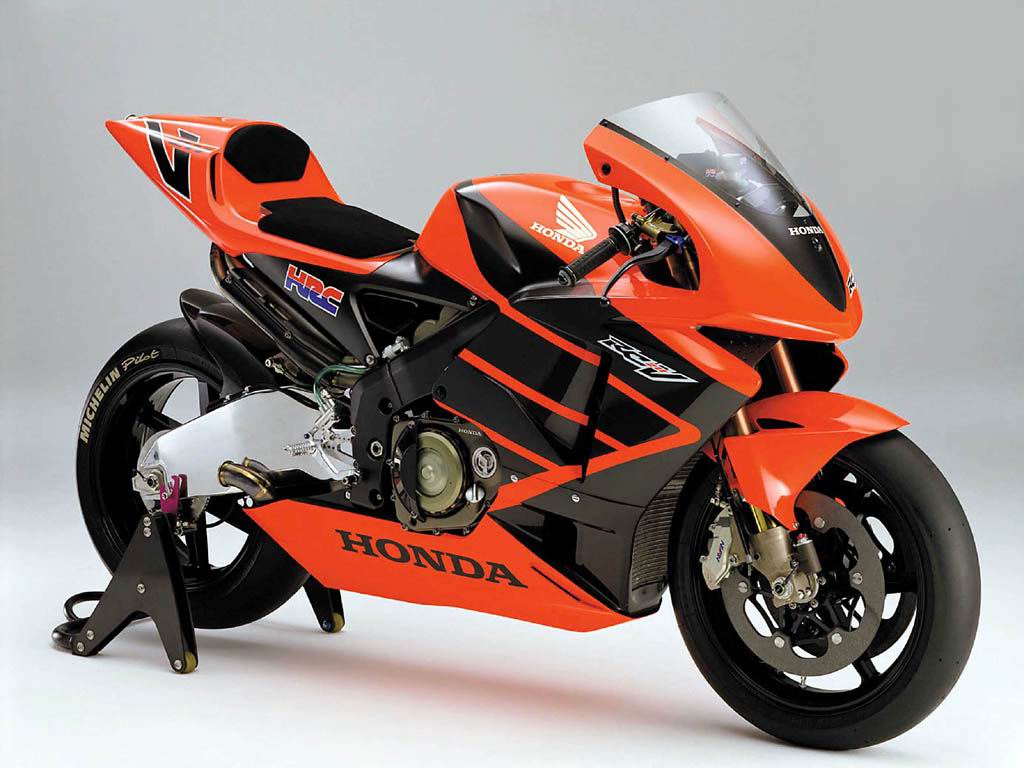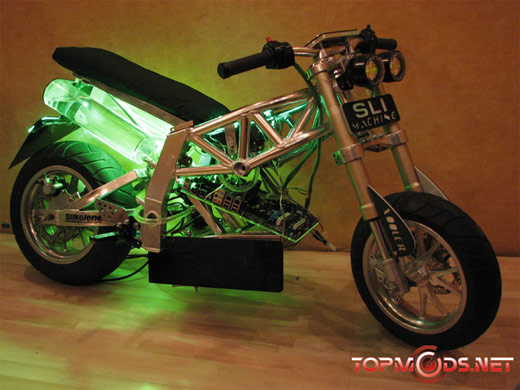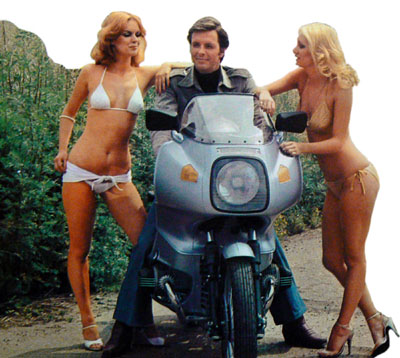It took the Pebble Beach Concours d'Elegance only 59 years to allow motorcycles onto their hallowed greens by Monterey Bay, and coincidentally onto 17 Mile Drive, which is the only access into this gated community. Previous to last year, attempted entry onto the Drive would have seen you riding back whence you came, as it will today if you approach the guard kiosk, after the parties are over and the temporary motorcycle welcome has worn off. Don't get Notions just because 27 amazing motorcycles were tucked onto a patch of unmowed grass (the 'rough' - and aren't we just) during the Concours; there are still drinking fountains marked 'biker' at the PB Lodge.
Pebble has chosen a strict thematic presentation for their motorcycle Concours, and this year all entries were US-made and pre-1941. The number of machines increased 50% over 2009's 'British' display, with a good balance between restored machines, unrestored survivors, plus a few troubling 'restored-to-look-unrestored' bikes. All hinted at the abundant variety available to an interested customer in the 'Teens and Twenties especially; singles, twins, fours, overhead-valve, sidevalve, F-head, direct drive, belt-drive, two-speed, three-speed.
Of the Unrestored category, most were racers not roadsters, each with a 'wow' factor for different reasons. Vince Martinico brought his 1908 Indian 'Torpedo Tank', last seen winning Best in Show at the Legend of the Motorcycle Concours; a small miracle of a machine from the advent of that famous company, Vince brought a few photos along to document who raced the bike (Paul Derkum), and pedalled into chuffing life several times during the day.
The little v-twin engine has atmospheric inlet valves (no direct cam operation, opened by piston suction), and the whole machine is still very much a bicycle with a motor stuffed inside...amazing to think that 3 years later, Indian would begin developing their 8-Valve racers, shortly to exceed 100mph! This little bike simply oozes character.
Dale Walksler of the Wheels Through Time Museum brought this 1929 Harley-Davidson DAR track racer, with four-valve cylinder heads, and four exhaust pipes giving the raciest look of all. It's a '45' (750cc), and extremely rare as most ohv H-D racers were built for Hillclimbs at that time. Clearly meant for flat-out speed , this DAR is really the business. Dale found the intact rolling chassis in the estate/barn of a former Harley dealer, and the proper engine just a few days later. He is convinced the engine is the Actual original from this chassis, as it fits perfectly with all the oil fittings and chassis brackets - and given HD only made a few of ohv racers of this type, he's probably right.
The DAR bears scrutiny - it's a masterpiece of racing engineering from the 20's; brutal, antiquated, and fast as hell. To compare this machine, with no gearbox or brakes, with other racers of the day (check this '26 Indian ohv road racer, or any road racer from England or Italy from the late 20s), highlights the unique character of US motorcycle racing pre-WW2, when it was all about dirt or board tracks, or hillclimbs, which evolved quirky machines so specialized as to be useless in any other context, and bearing zero technical similarity to the products in the showroom. The American equivalent of a GP racer.
Note the hand-hewn racing Schebler carburetor, with extra air intakes - a full separate bellmouth brazed onto the carb body, plus a hole in the mixing chamber, both controlled by the rider at speed via sliding covers - I've never seen a carb quite like it. More air!
Also interesting - the bike retains bicycle pedals, but these are appendages left from an earlier age, as pedal-starting such a beast would be impossible. Perhaps racing veterans felt comfortable with hinged footrests? The oiling system is unique, with two oil tanks inside the left pannier, one feeding the throttle-controlled oil pump, the other oiling the chains. A hand-pump gave a shot direct to the drive side main bearing; all the oil eventually went back the dirt, not to the oil tanks.
As all machines at Pebble are expected to run (and ride onto the podium in case of a prize award), starting this Harley presented a challenge, solved via the largesse of Bryan Bossier, who allowed his 'Big Tank' Crocker to be used as a starting mule, the two machines backed into each other and making an unforgettable racket as the HD came to smoky life. It was quite a scene, worth the price of admission - definitely the most expensive set of starter rollers Ever. (photo courtesy Bob Stokstad)
Larry Feece brought his 'barn find' racing team of four Indian Scouts (750cc), '37-'41 models, owned and modified by Buck Rogers, an engineer at Studebaker cars. Rogers began with one Sport Scout (1937), had it tuned by Art Hafer, then purchased three more over time to support young racers with a bike and some gas money. He ran his privateer team for five years, then parked the bikes in 1955, where Feece found them in as-last-raced condition decades later. Larry has wisely kept them strictly as found during his tenure, whilst the collecting world catches up to the idea that untouched machines are simply irreplaceable, and our true historical treasures.
Two unrestored/original Harleys were remarkable historical references, and likely the best century-old (or nearly so) HDs around, both resplendent in subdued grey paint, with oxidation appropriate to their age. This 1915 '11F' twin sold at the Las Vegas MidAmerica auction in 2009, and gives an idea of the fine quality pinstriping emerging in Milwaukee during the 'Teens. A very appealing motorcycle (and having ridden a '15 HD just like this, I can attest they go surprisingly well too, with decent handling).
Even more subdued is this ex-La Grange Police Department 1909 HD single, the 'Silent Grey Fellow', very quiet indeed with no whining gearbox or thrashing chains, just that big flat leather belt going around with a quiet 'tic' every time the riveted joint goes over the engine pulley. This is another amazingly well preserved motorcycle, the sort of bike which might have been restored 20 years ago, but thankfully wasn't.
This 1913 Flying Merkel is mostly an original paint machine, although owner Mike Madden admits to 'sprucing-down' the primary chain cover, as the original was missing and a new one fabricated. He didn't try too hard to mimic the original paint, so the replacement is clear but doesn't glare. The Merkel was quite a sophisticated motorcycle, with monoshock rear suspension and an oil-in-frame chassis; features which would be loudly advertised again in the 1980s! The front fork are rigid though...
Last up on our tour is this faux-original 1916 Excelsior Board Track racer, which has an impressively applied patina. It took real skill to develop the 6 or 7 layers of paint, varnish, stains, and chips to achieve such visual depth and amber/oily coloration on various new components. Someday, though, when the paintwork has actually oxidized, it may be difficult to tell this machine from an original/unrestored bike, and then the trouble begins.
|
|---|
Wednesday, August 25, 2010
Subscribe to:
Post Comments (Atom)



























No comments:
Post a Comment